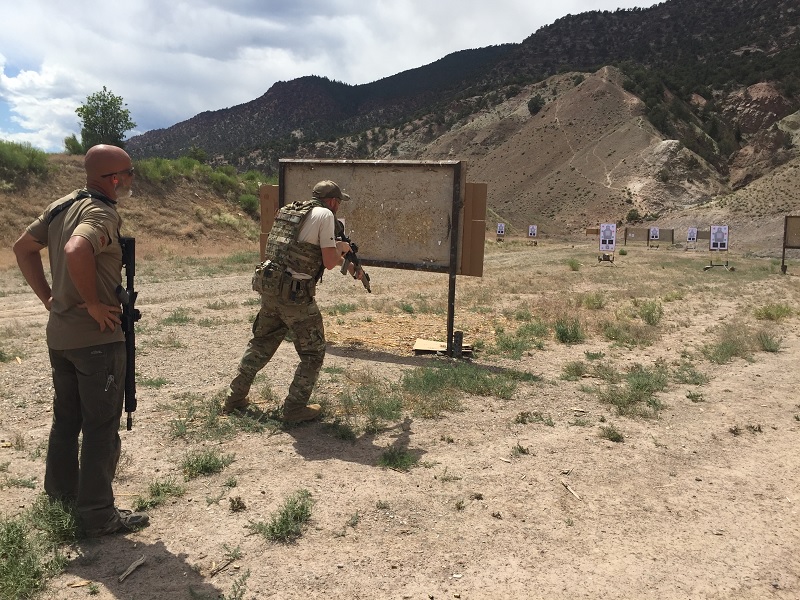Combat Focus Carbine: Defensive Carbine for Daily Living
Terry Nelson 07.22.19
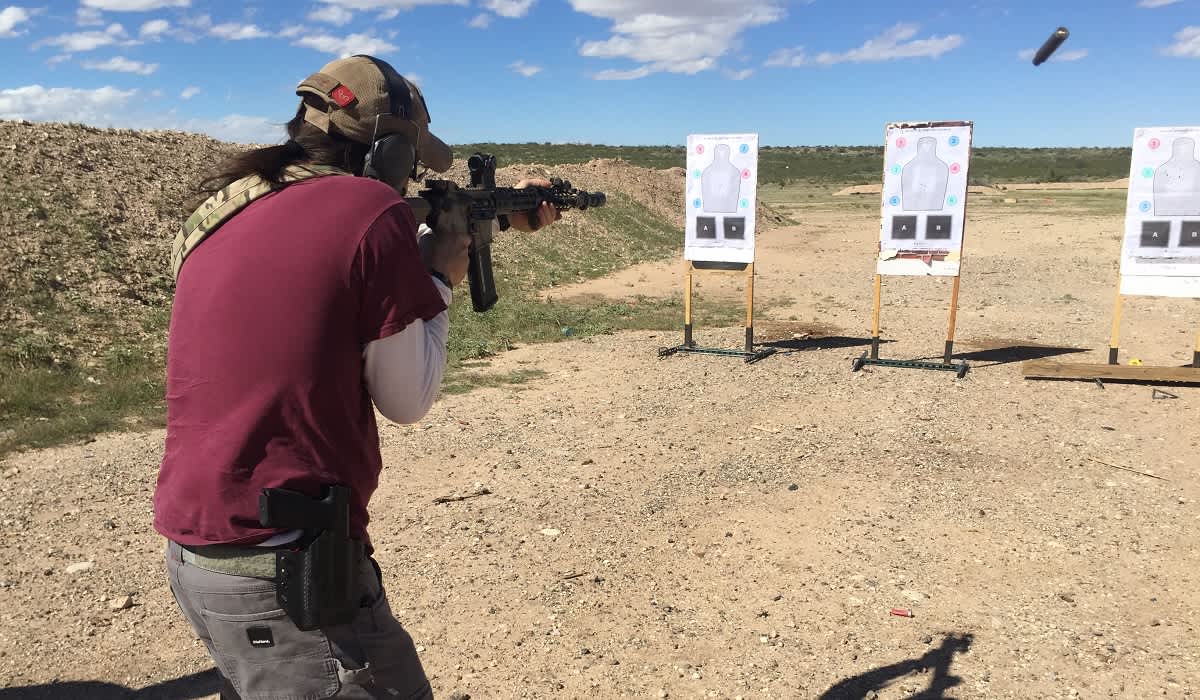
Most of us whom are serious about self-defense have a handgun prepped and ready around the house, in the car or on our person. Many I know also keep a good shotgun at the ready. But fewer folks seem to consider the defensive carbine for home and vehicle defense. There may of course be some legal issues to contend with these days (imagine that) while carrying any firearm in your car (know your state and local laws). Fortunately, I live where carry of a firearm in a vehicle is not a legal concern and therefore routinely have a carbine readily accessible in my car and home at all times.
With this in mind, in the not too distant past I had the opportunity to attend a Combat Focus Carbine course in Colorado. This training was just one of a variety of courses sponsored by Personal Defense Network (PDN) and Rob Pincus, Executive Director of PDN. Although there are numerous instructors working nationwide for PDN, Pincus was the on-site instructor for the class I attended.
As with any credible firearms training course, a discussion of safety and responsibility started out the day. The primary emphasis of Combat Focus Carbine was the defensive use of your carbine (both AR and AK platforms were present in this class) in and around your home and vehicle, a concept often overlooked by the average concealed carry holder today. Pincus’s approach is focusing on the threat when firing from about ten yards and closer, rather than a focus on the front sight, a technique new for many shooters. Hence the “Combat Focus” trademark. The carbine course I attended was no exception.
Pincus provided the students a series of drills and shooting techniques designed to enhance the shooters’ manipulations of the carbine, especially in close quarters such as your home or around a vehicle. Four baseline drills from the class that you may find useful are outlined below.
Extend/Touch/Press
This drill started out the day at the five-yard line. The five to seven-yard distance is realistic to defensive actions taken within your home or around your vehicle. While in a good stance, (squarely facing the target with feet placed shoulder width apart) and the toe of buttstock in the pocket of the shooting shoulder, the student would extend or bring the carbine into the cheek weld while beginning trigger touch, and then press the trigger as the muzzle was on the threat/target. All the while the focus is on high center mass of the target (combat focus), looking into the desired strike zone.
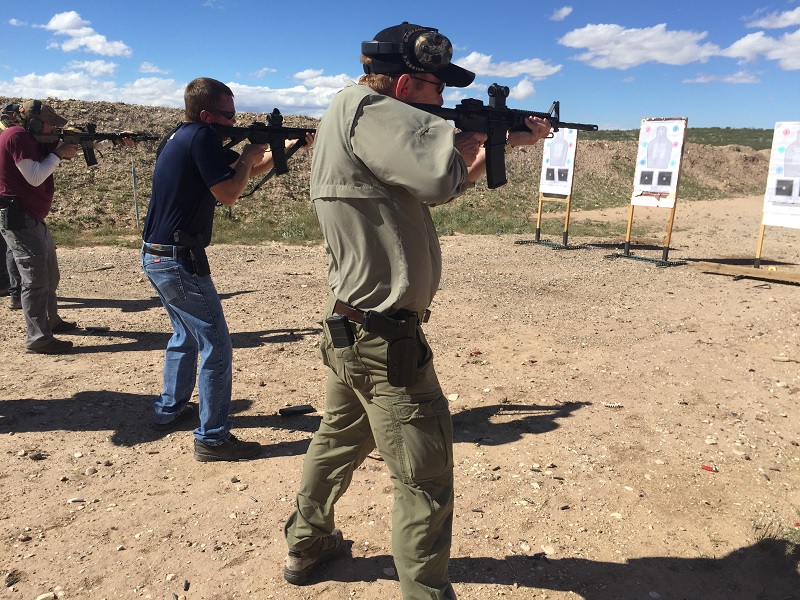
This technique is very fast and more than combat accurate at the five to ten-yard line and can be built upon with repetitive training in order to become more efficient and accurate. A continuation of this drill numerous times while increasing rounds fired from two up to six was performed by the students.
After several reps of extend-touch-press, Pincus added lateral movement while moving into the shooting position.. a very realistic and useful tactic.
Flow Drill
After having a thorough discussion and demonstration of a variety of shooting positions, including standing, kneeling and sitting, Pincus had students commence with what he calls the Flow Drill. At about 12 to 15 yards, students would “flow” through all three of these shooting positions (as physical abilities allowed) while engaging the target with multiple shots. All students realized quickly that as distance increases, one must start using the iron or red dot sights. This drill forced students to maintain good muzzle awareness and finger discipline while moving between positions and attempting to make good combat accurate shots. It also makes a person realize that maintaining a good physical fitness level should be a priority.
Also introduced during this segment were the squat or “rice paddy prone” position and the supine (flat of back). Both are excellent positions if the shooter’s body and joints will allow.
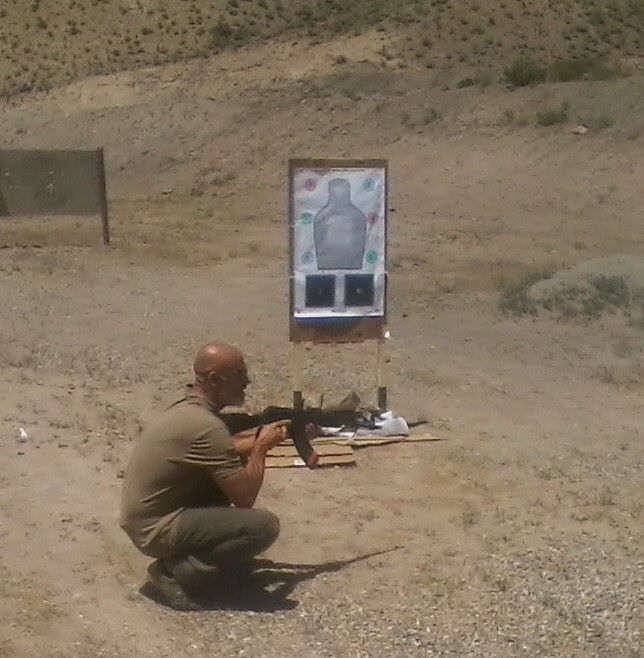
Front, Middle & Back
This drill also required some physical movement and exertion. Shooters would begin at about the 30-yard line. Upon hearing a verbal command “move,” shooters would run to a certain yard line, say the ten-yard mark, and fire multiple rounds into target center mass. A command would then be given to move forward or back to another called yard line and turn to fire multiple shots again. This drill got heart rates up and created a bit of stress with movement. Do this numerous times in rapid succession you begin to realize how increased respiration and heart rate can affect your shooting accuracy at even close distances.
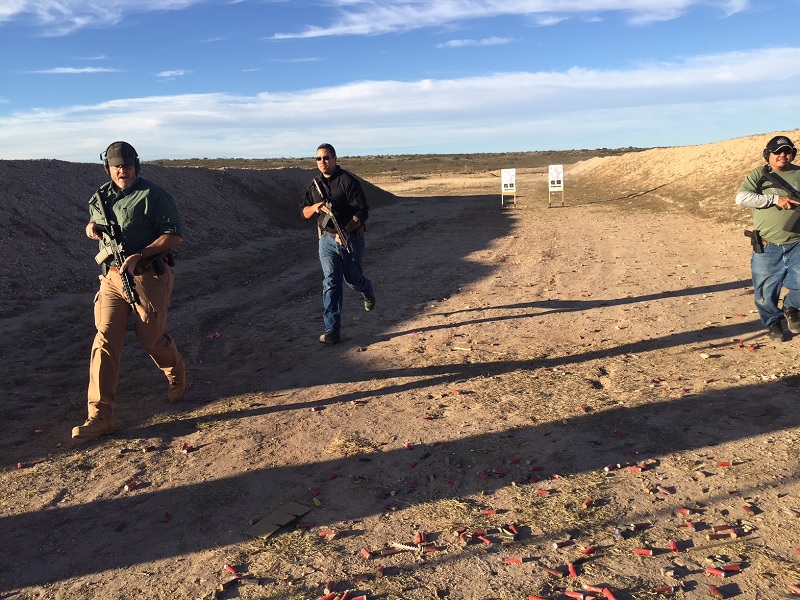
In my opinion, this provides a real-world application because few confrontations are static. Safety protocols were of course in place so that no shots were fired until all shooters were on the same yard line and facing downrange and maintaining muzzle control.
Target ID
The target used for this drill segment was the PDN-trademarked “Balance of Speed and Precision.” This target is a silhouette and provides a center mass zone that is slightly blurred, along with a head zone, plus eight-inch “A” and “B” squares at the bottom. In addition, there are numbered and colored circles on the outer margin of the target.
Pincus would call out different colors or numbers, or puzzles with numeric answers. Shooters would move laterally, find the correct colors and or numbers, and then fire at those specific targets. It’s a good exercise that incorporates movement, multiple threats, target ID and thinking. This drill was conducted from around the five- to seven-yard line.

Other shooting skills were addressed during this course including transition to and shooting from support side shoulder, use of cover and cornering, assessing surroundings after shots fired, shooting through small ports or openings, and shooting from supine both left and right positions around and under a vehicle. You should expect 400 to 500 rounds fired if you attend one of these courses.
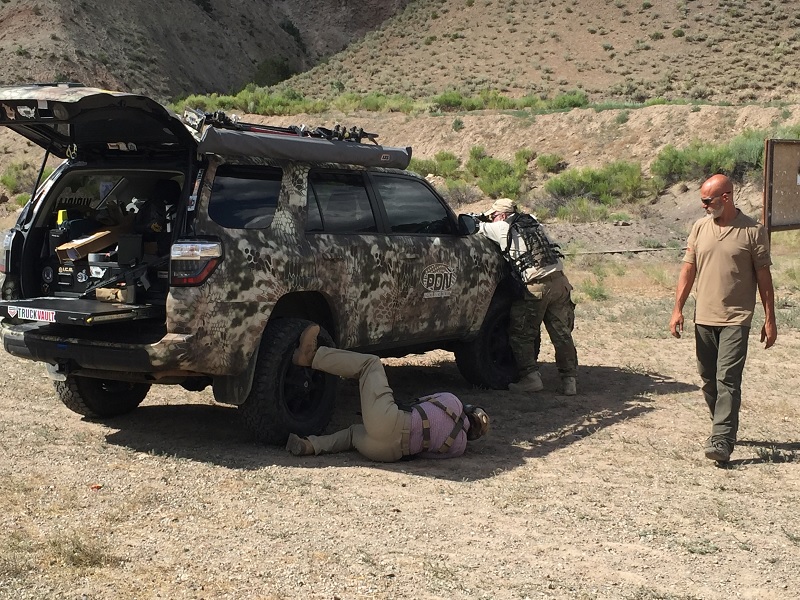
I found this training very thorough and well-conceived and have used several of these drills in training I provide. You could categorize the course as a home and close quarter’s defense with your “fighting carbine.”
Continue to search out valid and credible training for your daily defensive lifestyle. If you’re interested in upping your skill set with a carbine, check out the Personal Defense Network online for a list of training and course locations nationwide.
